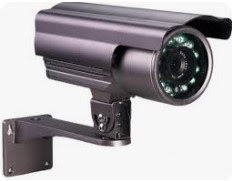Setting up Long-Distance Wireless Connections for CCTV Video Surveillance and Data Transmission involves several steps and considerations. Here's a general guide:
1. Assess Requirements: Determine the distance between the
surveillance points and the monitoring station, as well as the bandwidth
requirements for video transmission. This will help you select the appropriate
wireless equipment.
2. Choose Wireless Technology: There are several wireless
technologies suitable for long-distance connections:
Ø
Point-to-Point (PTP)
Wireless Bridges: These are ideal for connecting two locations directly without
interference from other devices.
Ø Point-to-Multipoint
(PTMP) Wireless Bridges: Suitable for connecting multiple locations to a
central point.
Ø Wi-Fi: Can be
used for shorter distances or in urban environments, but may not be suitable
for very long distances or areas with heavy interference.
Ø Microwave:
Suitable for long-distance connections with high bandwidth requirements but may
require line-of-sight and licensing.
3. Select Equipment: Choose wireless equipment that
matches your requirements, including antennas, radios, and any necessary
accessories like lightning protectors.
Ø
High-gain directional antennas
are often used for long-distance connections to focus the signal.
Ø Choose radios
with sufficient power output and the ability to operate in the desired
frequency bands.
4. Site Survey: Conduct a site survey to determine
the line-of-sight (LOS) between the two points. Ensure there are no obstacles
such as buildings or trees blocking the signal path. Use tools like Google
Earth or specialized software for this purpose.
5. Install Equipment: Install the wireless equipment at
both ends of the connection. Mount antennas in locations with a clear
line-of-sight and ensure they are securely fastened.
6. Configure Equipment: Configure the wireless equipment
according to the manufacturer's instructions. Set up encryption and security
measures to protect the data being transmitted.
7. Test Connection: Test the connection to ensure it is
stable and capable of transmitting video data without interruptions. Measure
signal strength and throughput to verify performance.
8. Optimize Performance: Fine-tune the system for optimal
performance, adjusting antenna alignment, power settings, and other parameters
as needed.
9. Monitor and Maintain: Regularly monitor the wireless
connection for any issues such as interference or signal degradation. Perform
routine maintenance to keep the equipment in good working condition.
10. Consider Redundancy: For critical applications, consider
implementing redundancy measures such as backup connections or failover systems
to ensure continuous operation in case of equipment failure or other issues.
By following these steps and considering the specific
requirements of your CCTV surveillance system, you can set up a reliable
long-distance wireless connection for video transmission and data surveillance.








0 Comments